Deer love elderberry just as much as humans. I’ve seen descriptions for elderberry plants at nurseries and online claiming deer resistance…I’m a bit skeptical of that. We’ve planted wild varieties of elderberry as part of a giant hedgerow conservation project - those were bareroot seedlings, and deer would just pull them out of the ground to nibble on. We used deer repellent on the hedgerow, but it needed to be reapplied frequently & wasn’t a cheap solution. I suspect deer damage is somewhat seasonal - they like fresh young leaves and can decimate a new crop, but will also like the berries. Because American Elderberry has less precursors to cyanide, deer won’t be deterred by a tummy ache like they would be with European nigra varieties.
When researching deer fence options, there are many possibilities. I’ve read that a deer fence needs to be 8 foot tall to mostly keep deer out. I looked into special ordering 10’ t-posts that we’d bury 2’ into the ground. The logistics of doing that were daunting. We don’t own special equipment…my tentative plan was to stand on the back of the UTV and pound them in by hand with a post driver. If the fence even worked, it would be awkward and hard on the body - I have recurring carpal tunnel - needless to say, the 8’ fence idea wasn’t going over well.
3D Deer Fencing
I’d heard of 3D deer fencing, but wasn’t sure if I believed it’d work. After speaking with another elderberry farmer who has a 3D fence setup, I was convinced!
Honestly, a 3D deer fence looks a little silly. How’s that supposed to keep deer out - you can step over it! Deer have eyes on the sides of their head, and this messes with their depth perception. The placement of the lines creates the illusion of a larger barrier that deer are reluctant to cross. By placing the inside line ~24” off the ground, and outer lines at ~10” and ~18”, the deer are unsure if they can safely make the leap. The inner and outer electrified lines should be placed roughly 3 feet apart.
We placed weed barrier under all of our fencing. It was an extra effort & expense, but should be worth it in reduced maintenance. If grass or weeds get tall enough to touch one of the lines, it will create an electrical short and the fence will be useless until the problem is found & fixed.
Speaking of extra effort & expense…the new plan is to mulch over all the weed fabric to keep it in place. It gets windy in Missouri, and pulls up the stakes. It’s tiresome repeatedly replacing the fabric & staking in place.
Posts & Polyrope
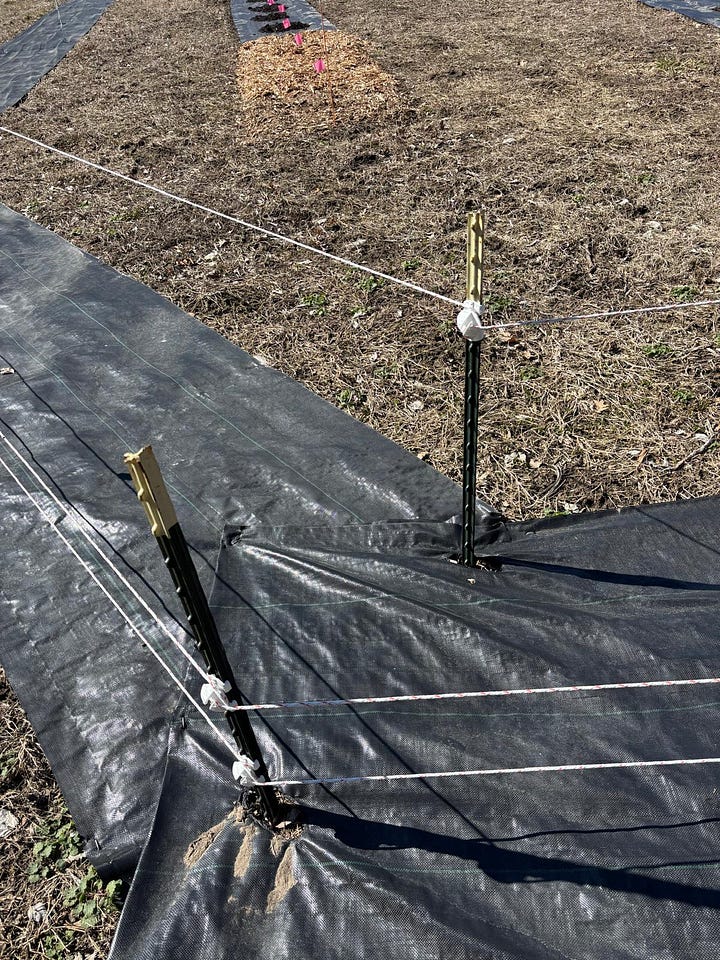
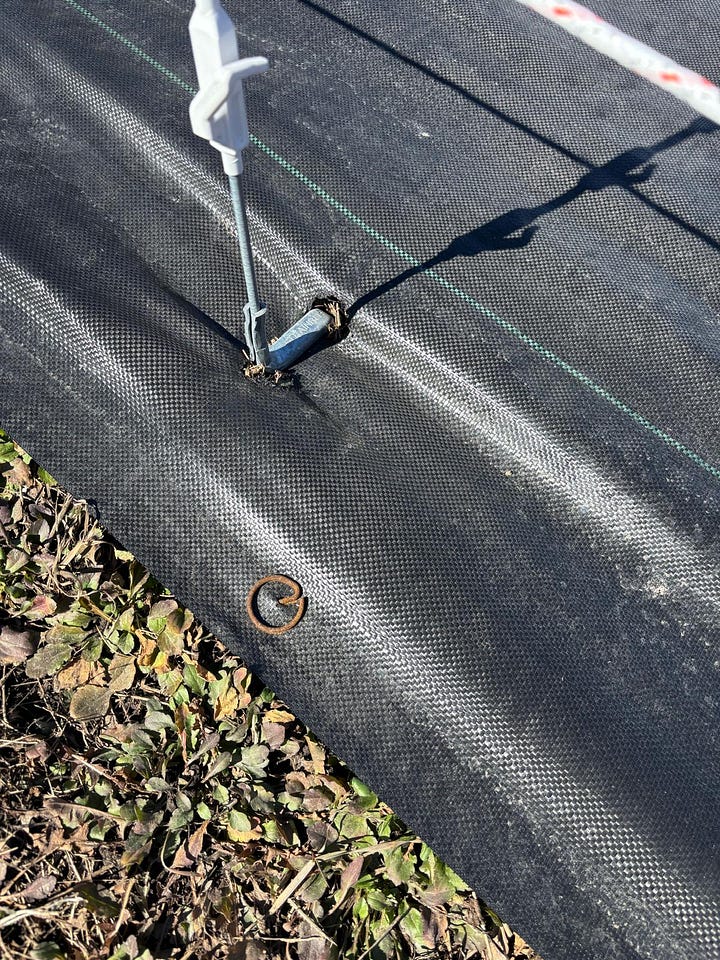
We used steel t-posts with insulators at the corners of the fields for stability, and 35” tall step-in springsteel posts to support the polyrope in between.
We used 9-wire braided polyrope for the line - the number of wires matters, and it’s best to go with a higher number for better performance.
Anywhere we had to connect polyrope together (ran out of a spool and starting another/end of the line/etc), we either tied slipknots (you can find this on youtube) or used polyrope connectors. We did some of each method, but I personally like the connectors - they’re easy to adjust, are secure, and look nice.
Fence Energizer
I did a lot of research & comparison of electric fence energizers, but ended up with the Gallagher brand S40 for a few reasons:
1) Built in Solar Power (we don’t have electric on site yet)
2) It has a specific setting for wildlife (and also one for livestock). Many electric fence energizers are meant for cattle, the frequency needed for deer is different. Also, deer are more active at night so the system continues providing consistent electrical pulses (some energizers decrease nighttime pulses to save energy because cattle are less active during that time)
3) The energizer is more than sufficient to power the 3 electrical lines of our 3-D fence. It’s important to calculate total line length to ensure your charger is powerful enough. We have two elderberry fields wired up separately, each with their own charger.
4) During my research on how to set up an electric fence, I saw a NCAT video where this charger was one of the options discussed. I highly recommend the linked video when learning about electric fence options.
Grounding
Don’t forget to ground your energizer! We buried a copper rod 4’ in the soil, then attached to an insulated cable. Instructions indicate to keep the soil around the copper rod moist for proper grounding. I guess if we have a drought I’ll occasionally dump some water on the area, but haven’t had to deal with that yet.


Connecting the Lines
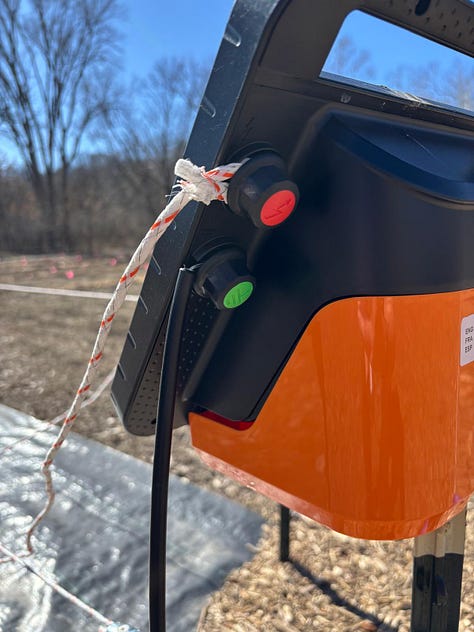
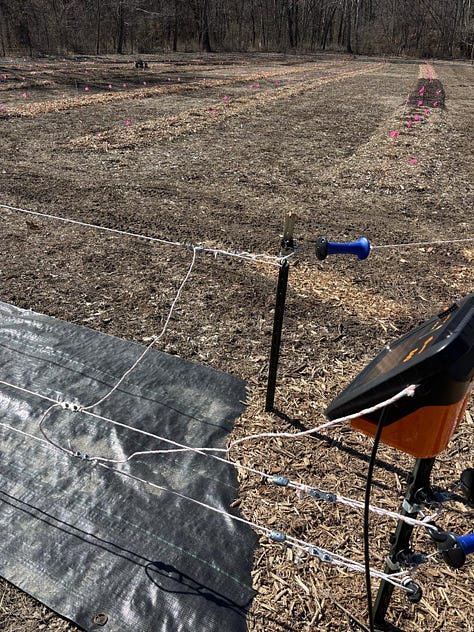
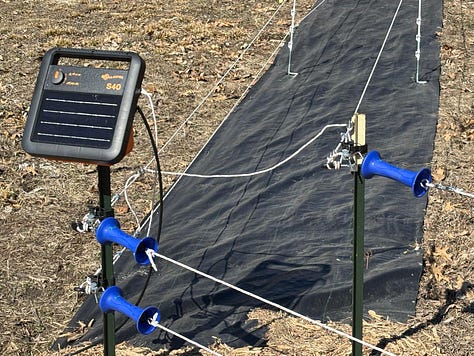
We used smaller lengths of polyrope to connect all three lines together, then connected to the charger. Either using polyrope connectors or tying knots is acceptable, as long as it’s a secure connection.
Adding a Gate
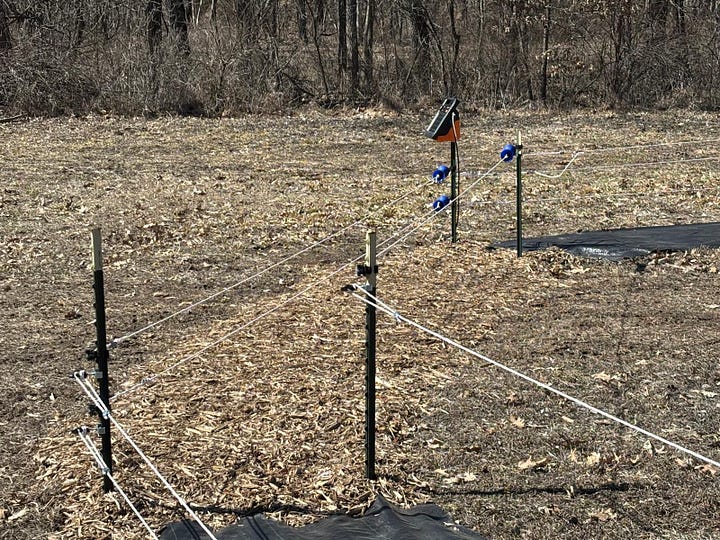
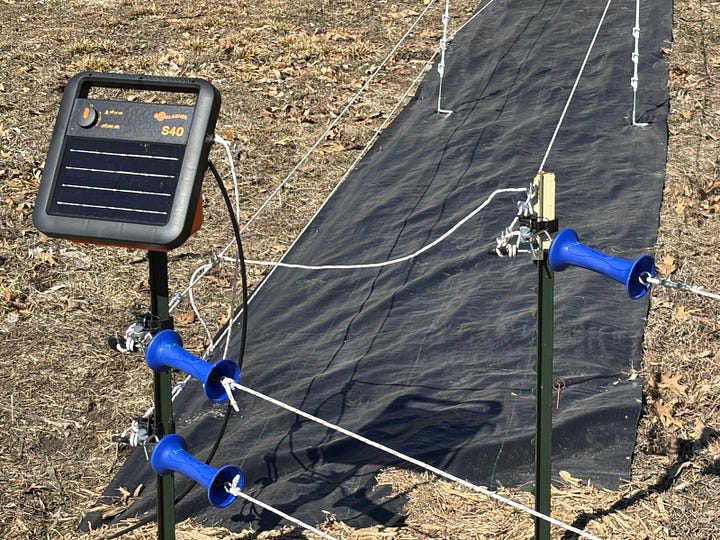
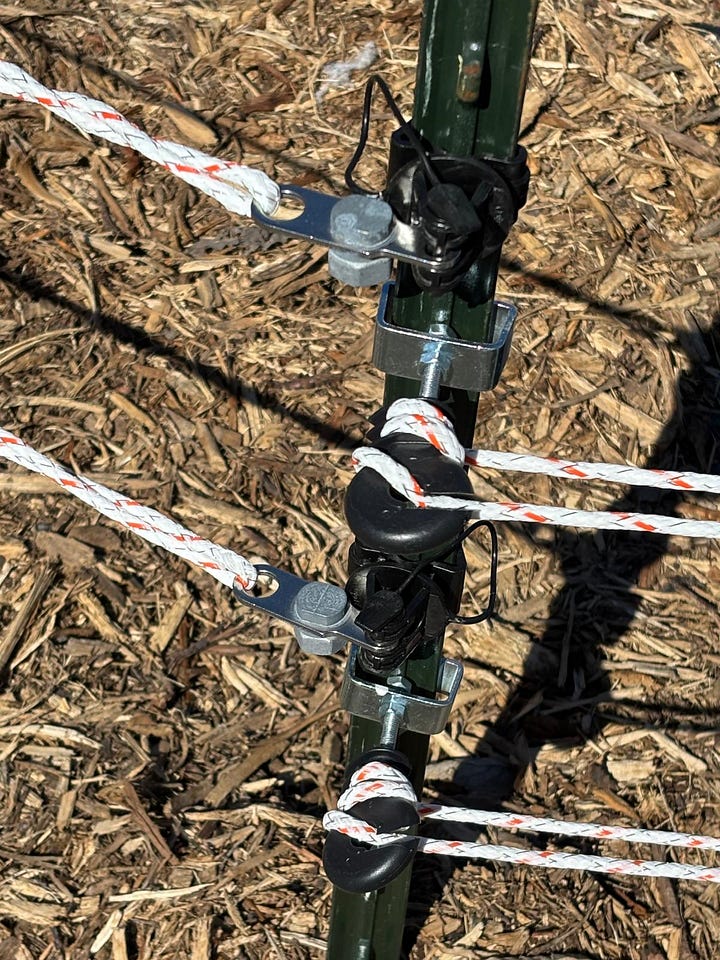

We have our system rigged up so that in theory (haven’t tested yet to confirm), you could unhook the gate while the fence is still electrified - the gate rope itself would not have a charge. So far, I’ve just been turning off the system when I’m working in the elderberry fields.
The poly rope for each electrified line wraps around an insulator on the gate t-post, then connects back on itself. This isolates the gate from the rest of the system.
The “hinge” side of the gate is not attached to electricity.
The handle of the gate hooks on to a t-post activator, which is linked to the electrified polyrope. When hooked in place, all polyrope is electrified, including the gate.
Incidentals

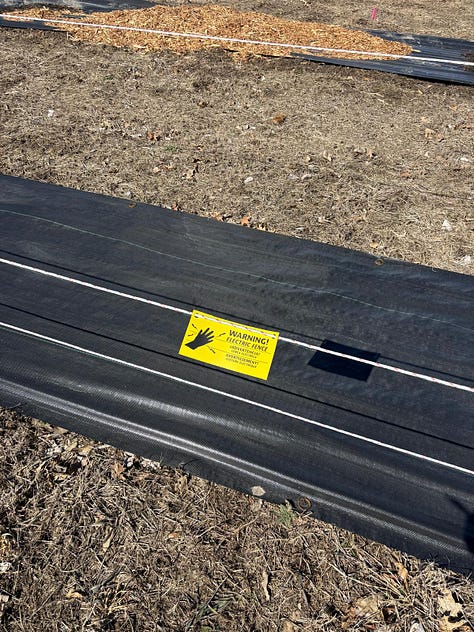

It’s a good idea to have a tester to check if your electric fence is working. If there is a problem, this tester can help locate the direction of a fault so it can be fixed.
Warning signs are important - polyrope is becoming more popular, but some people may not realize it’s electrified.
We got scent caps that are metal and attach to the polyrope with wire. There’s a bit of cotton that can be soaked in apple scent to attract deer. The idea is that the deer will come get a shock from the scented cap and learn not to come back.
Effectiveness
We installed our fence a few months ago when there was still snow on the ground. I’ve only seen evidence of one deer getting in - there were tracks right up to the fence, a jump, run straight across and another jump out. Even a massive 8’ fence wouldn’t keep every deer out, but hopefully the depth perception/electrification of our setup will be enough of a deterrent to keep out most deer.
I’ll try to update when I have more data (and delicious elderberries temping the deer)!






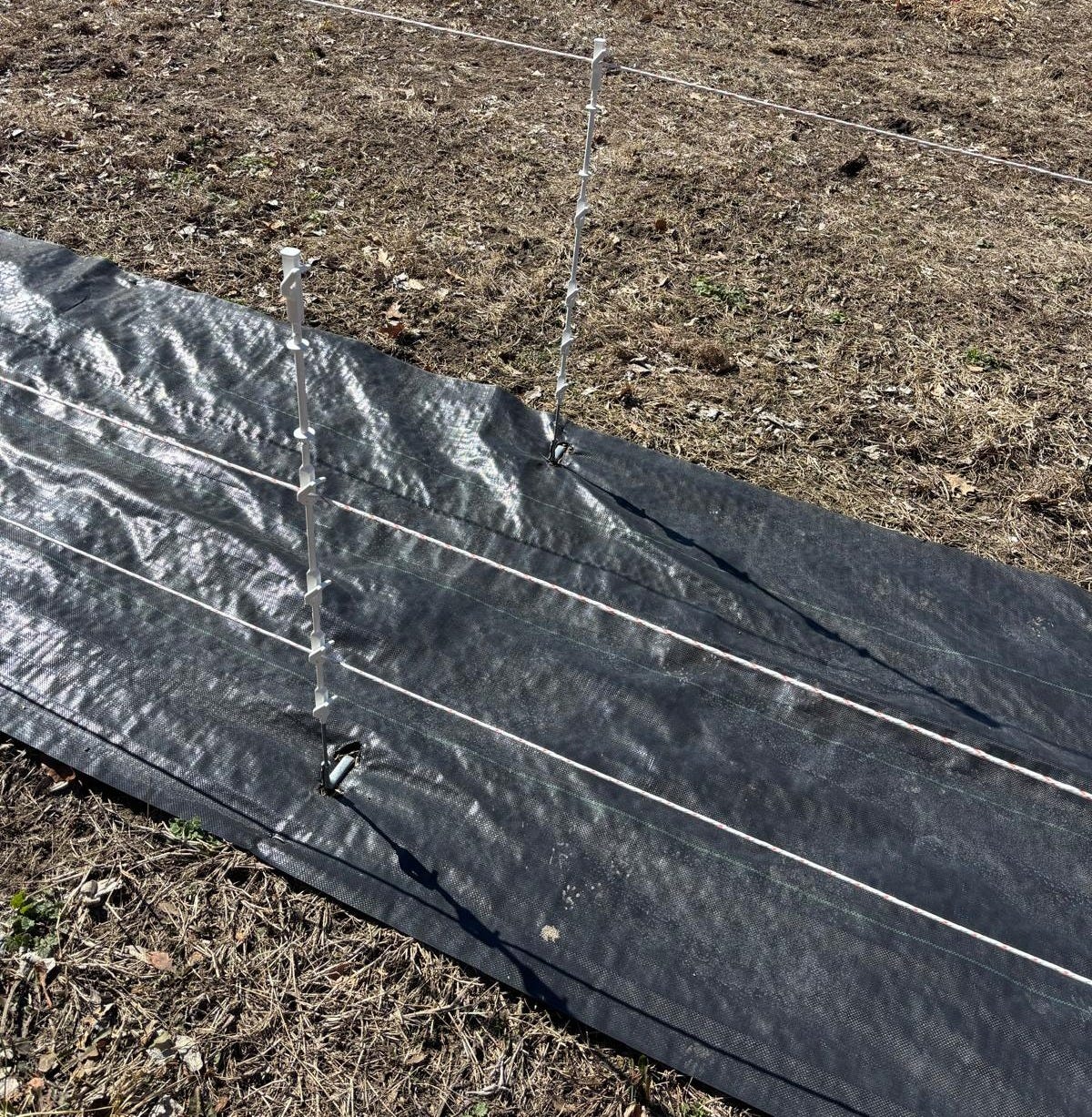

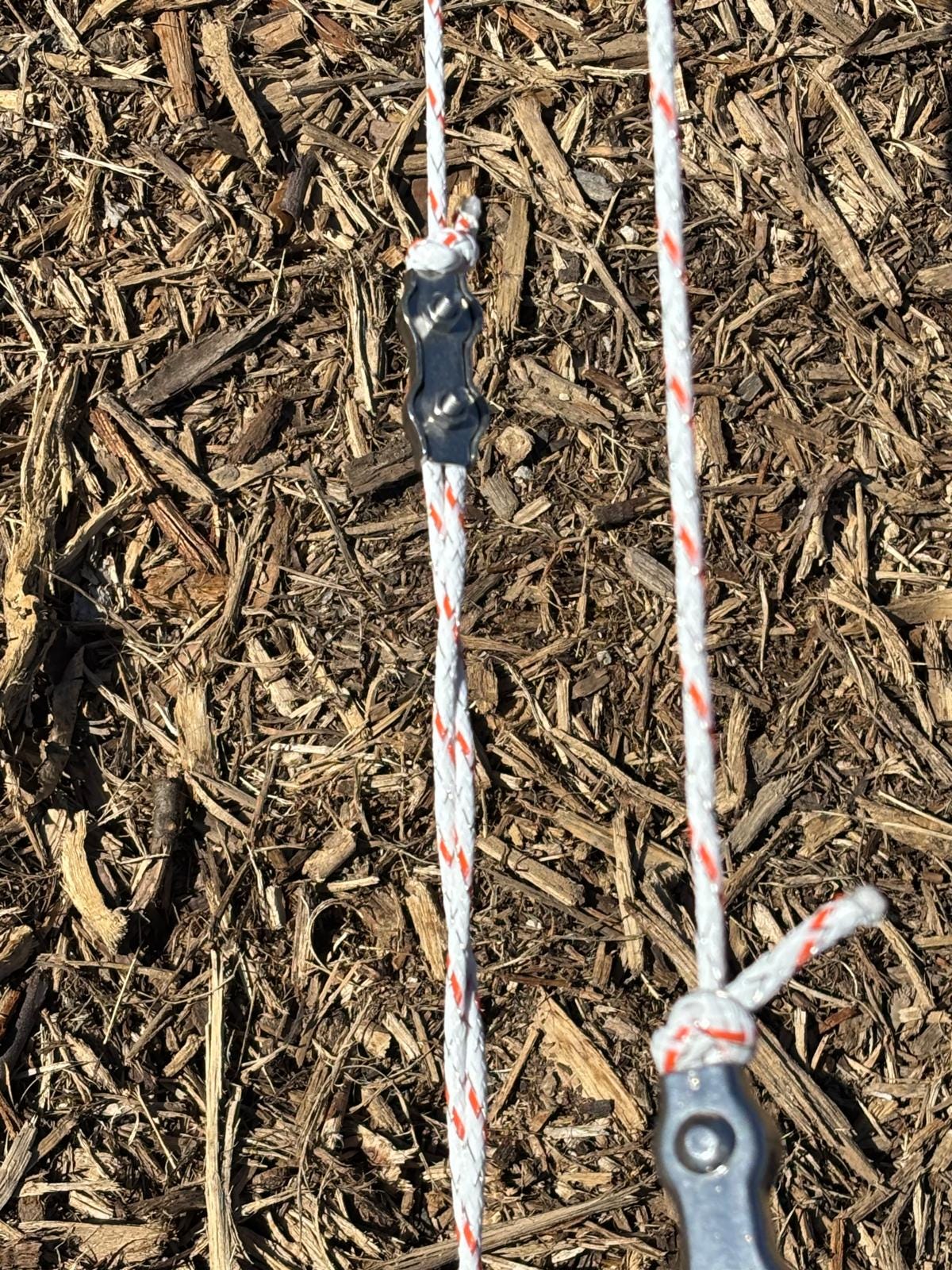

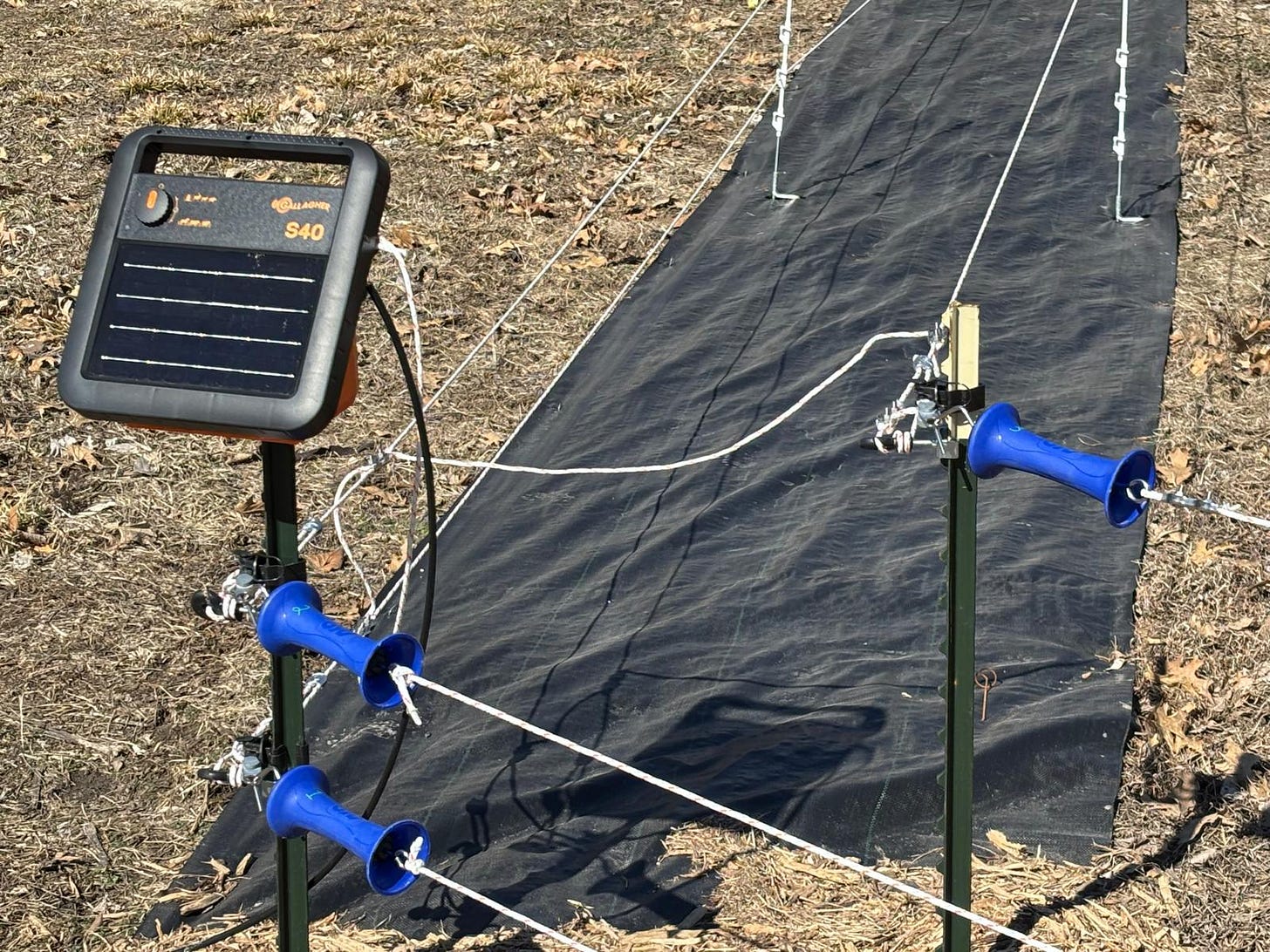







One thing to note, I did test the gate and it does work, the gate lines are de-energized and the rest of the fence is still energized. But to Julianne's point sometimes it's just easier to turn off the fence since it's right there.